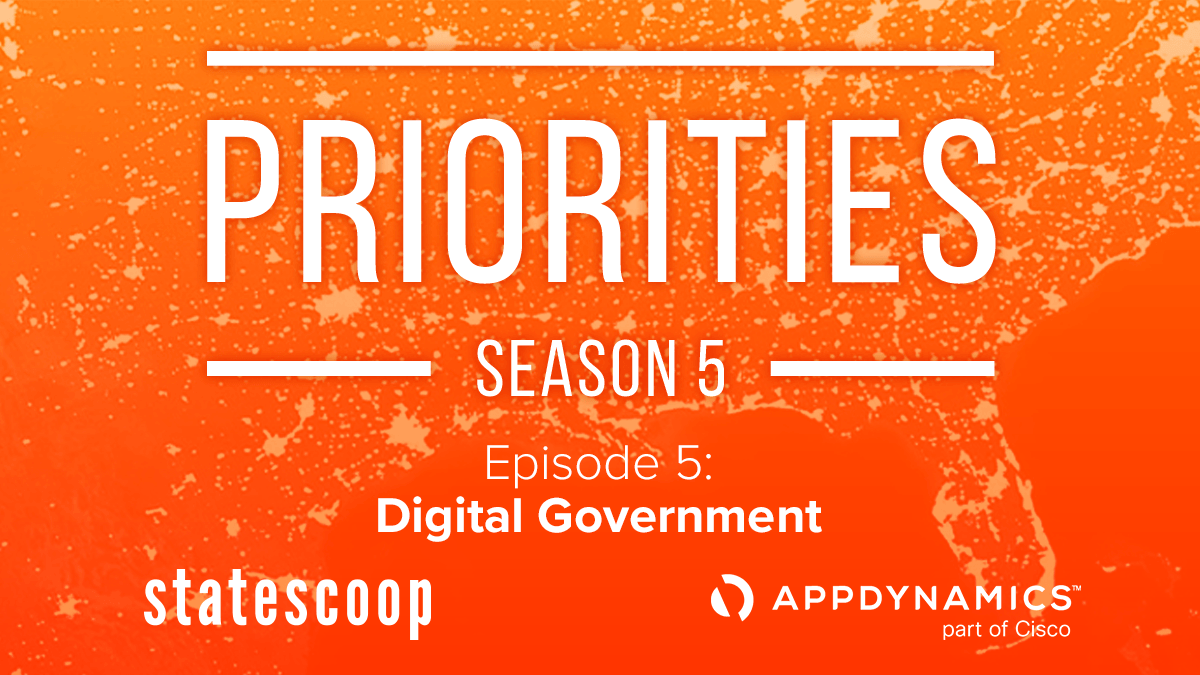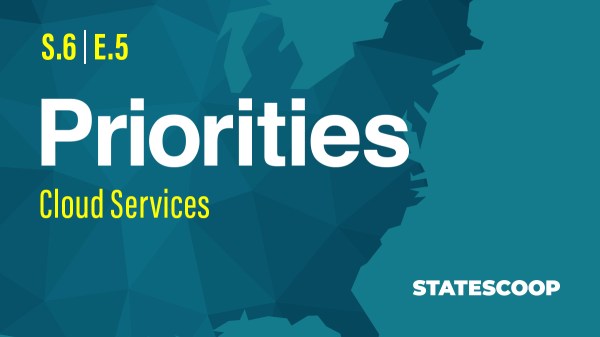
Pandemic sped adoption of states’ digital services, exposed lapses in preparation
The coronavirus pandemic has revealed the true capabilities of many organizations, with one of the most notable examples being how successfully states have managed to continue delivering services digitally as many physical locations remain closed.
The degree to which state IT agencies have in recent years prepared for a more flexible service-delivery model — by adopting technologies like adopting cloud technologies and virtualization — has in many cases proven the primary factor in determining whether operations have been able to continue smoothly, says J.R. Sloan, chief information officer of Arizona, on StateScoop’s Priorities podcast.
“That work that had been done by our agencies really helped position them well,” Sloan says. “The work that we’d done in the background on focusing on moving to the cloud, adopting cloud services, modernizing applications, those I’ll say less-sexy-but-necessary efforts have positioned the infrastructure along with wrapping that with a comprehensive set of common security controls really helped us more and pivot to respond to the pandemic and do so with good success.”
John Hoffman, chief technology officer of Texas, says on the podcast that the speed with which agencies in his state have managed to deploy new services and adapt to an unpredictable environment have boosted the confidence of administrators and will continue to benefit operations in coming years.
“Going forward, I think that we have gained a sense of maturity through this process that I think we will all remember and we will have muscle memory around for a long time,” Hoffman says.
Similar trends are reported nationally. Matt Smith, a regional sales director with the San Francisco-based technology firm AppDynamics, says that through his interactions with various state government technology agencies during the pandemic, he’s noticed that many technological challenges have been solved through collaboration across private and public sectors and across agencies within individual government organizations.
“The expedited move to digital and doing it at scale is obviously one challenge a lot of folks are facing, especially in the past few months with everything we’ve been facing,” Smith says. “Those that were successful have been able to pull these various groups across the state and the experts that they have together very quickly.”
On the podcast:
- J.R. Sloan, CIO, Arizona
- John Hoffman, CTO, Texas
- Matt Smith, regional sales director, AppDynamics
- Colin Wood, managing editor, StateScoop
Things to listen for:
- Delivering digital services to residents during the pandemic has “underscored the importance of agility,” Sloan says.
- The pandemic has in some cases pushed government agencies along faster in their adoption of certain technologies. Adoption of robotic process automation got pushed along faster in Texas during the pandemic than it would have otherwise, Hoffman says.
- Preparation is paramount, Sloan says. “That work that you do in the non-crisis times is what prepares you to really respond in the crisis. I think everyone would understand and agree — you don’t want to wait for the crisis to put it together,” he says.
- Having the right processes and relationships in place is often the main factor determining success for a project, Hoffman says. “Where we had it, it made such an obvious difference. Where it wasn’t completely in place, that we needed to fill in a gap or two, we realized how quickly that could impact things,” he says.
Produced in partnership with the National Association of State Chief Information Officers, Priorities dives deep into each of the top 10 priorities of state CIOs outlined in NASCIO’s annual list. This episode is brought to you by AppDynamics.
Listen to archived episodes of Priorities from Season 5 (2020), Season 4 (2019), Season 3 (2018), Season 2 (2017) and Season 1 (2016). Catch all of StateScoop’s podcasts on Soundcloud, Apple Podcasts, Spotify, Google Play, Stitcher or Alexa’s TuneIn.


